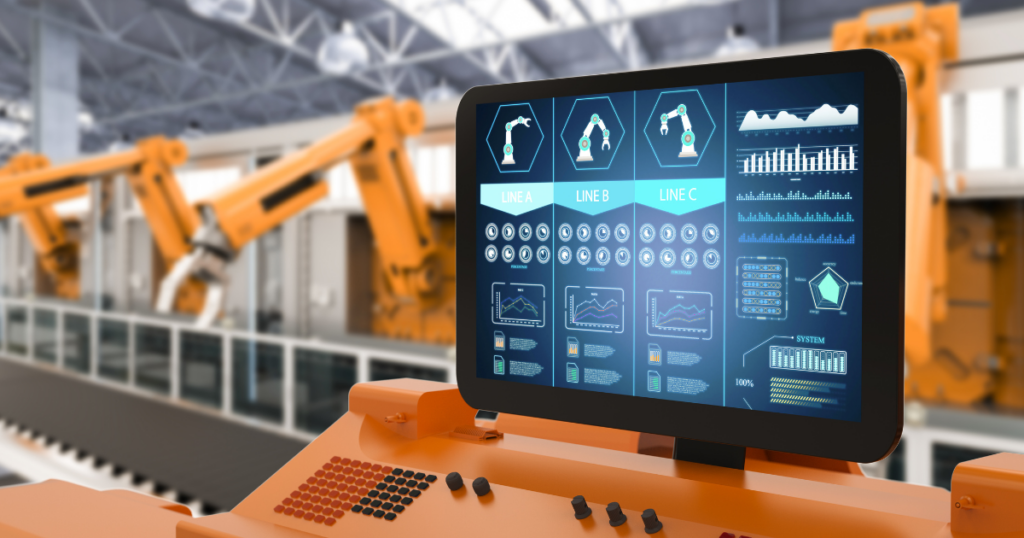Staying ahead in the game in manufacturing means embracing technological advancements that streamline operations and enhance productivity. Material automation stands at the forefront of this revolution.
This blog post unearths the transformative effects of material automation in manufacturing and highlights how Parts Dashboard’s features not only boost efficiency but also significantly reduce waste in production processes.

The Effects of Material Automation
The impact of material automation in manufacturing is multifaceted as it can fundamentally transform the way manufacturing processes are conducted.
Here are some of the key impacts:
- Increased Efficiency and Productivity: Automated material handling systems enable faster and more efficient movement of materials through the manufacturing process. This reduces the time taken for production cycles and increases the overall output.
- Reduced Labor Costs: Automation reduces the need for manual labor in tasks like material handling, sorting, and transporting. This can significantly lower labor costs, although it may also require skilled workers to manage and maintain the automated systems.
- Enhanced Accuracy and Quality Control: Automated systems are often more precise and consistent than manual processes. This leads to improved product quality, fewer defects, and less waste, which is crucial in industries where precision is key.
- Improved Safety: Automation can reduce workplace accidents and injuries by taking over dangerous tasks like handling heavy or hazardous materials. This not only enhances worker safety but can also reduce costs related to workplace injuries and insurance.
- Better Inventory Management: Automated systems can track and manage inventory in real-time, ensuring optimal stock levels and reducing the likelihood of overstocking or stockouts. This leads to more efficient use of resources and space.
- Energy and Cost Savings: Automated systems can be more energy-efficient than manual processes, leading to lower energy costs. Moreover, the overall operational costs can be reduced due to improved efficiency and reduced waste.
- Scalability and Flexibility: Automation allows manufacturers to scale their operations more easily to meet market demands. Automated systems can often be adapted or reconfigured to handle different materials or products, providing greater flexibility.
- Environmental Benefits: By optimizing material use and reducing waste, automated systems can have a positive environmental impact. They also contribute to sustainability by improving energy efficiency and reducing the carbon footprint of manufacturing processes.
- Competitive Advantage: Companies that adopt material automation can gain a significant competitive edge. They can offer faster, more reliable, and cost-effective production, which can be crucial in today’s competitive global market.
- Data Integration and Smart Manufacturing: Automation systems generate large amounts of data, which can be used for analytics, improving decision-making, and further refining manufacturing processes. This integration of data and manufacturing is a step towards smart, interconnected factories.
Material automation in manufacturing brings about substantial improvements in efficiency, quality, and safety. The future of manufacturing is increasingly leaning towards automation, driven by technological advancements and the need for sustainable, efficient production methods.

The Era of Automated Material Handling with Parts Dashboard
Real-Time Inventory Management
At the heart of material automation is real-time inventory management. Parts Dashboard excels in providing a comprehensive view of your inventory, ensuring that you have the right materials at the right time. This precision reduces the likelihood of overstocking or understocking, leading to more efficient use of resources and space. With real-time data, manufacturers can make informed decisions, respond quickly to market demands, and minimize downtime due to material shortages.
Automated Procurement: A Step Towards Efficiency
Another critical aspect is automated procurement. Parts Dashboard streamlines the procurement process by automating order placements for materials as soon as they reach a predefined threshold. This feature not only saves time but also reduces the manual errors associated with reordering. Manufacturers can maintain optimal inventory levels effortlessly, ensuring that production is never halted due to a lack of materials.
Seamless Integration with Existing Workflows
Perhaps the most significant advantage of Parts Dashboard is its ability to integrate seamlessly with existing manufacturing workflows. This integration facilitates a smooth transition to automated material handling, minimizing disruption to current operations. By fitting into the existing ecosystem, Parts Dashboard ensures that the shift towards material automation is as smooth as it is beneficial.

The Strategic Asset for Modern Manufacturing
Automating material handling allows manufacturers to focus on innovation and quality, leaving the complexities of material management to the system. This shift leads to a more streamlined production process, where efficiency and reduced waste become the norm, not the exception.
The journey towards fully automated material handling in manufacturing is not just a step but a leap into the future. By embracing material automation, manufacturers can ensure they remain competitive, efficient, and ready for the challenges of tomorrow.
Interested in revolutionizing your manufacturing process? Explore how Parts Dashboard can integrate material automation into your operations. Contact Us today to learn more and embrace the future of manufacturing!



